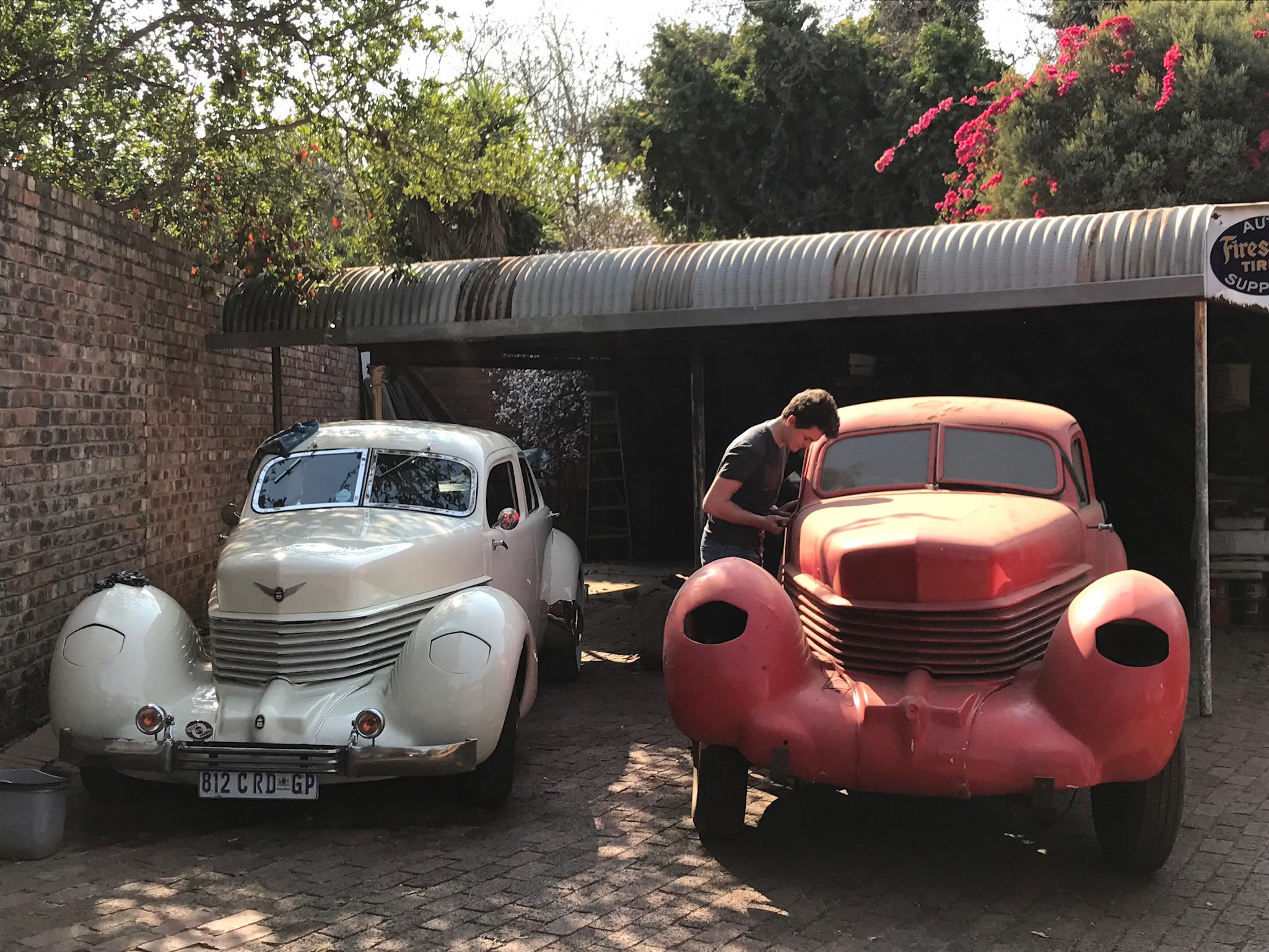Opportunities abound in South Africa’s vintage car market. It’s like a treasure hunt, with some incredibly rare classic vehicles scattered across the continent, sometimes in the most remote villages.
If you’ve ever driven past an old Mercedes-Benz rusting in a field, or spotted a forgotten VW Kombi parked behind a rural shack, chances are you were looking at a small fortune on wheels. For Paul Maree, a 25-year-old vintage car enthusiast based in Johannesburg, spotting and restoring these hidden treasures isn’t just a hobby—it’s a calling passed down through generations.
“My dad grew up poor in Pretoria, and working on cars was just what you did. He’d buy old Harley-Davidsons, restore them, and export them for big money,” says Maree. “He once paid R30,000 ($1,663) for a bike and sold it for over R115,000 ($6,373) in Canada.”
Maree inherited more than just a collection of 14 vintage vehicles when his father, Albert Maree, passed away in 2022. He also inherited a philosophy: the hobby must pay for itself.
And it does—just about. “I try to do everything myself,” says Maree. “Unless it’s a job like paintwork or one that needs massive pieces of machinery, I’m the one sanding, fixing, and assembling.” He’s currently restoring a rare 1965 VW split-window double cab, which he bought for R120,000 ($6,650). When finished, he expects to sell it for around R750,000 ($41,562). “I’ll spend about R300,000 ($16,630) on the restoration, but it’s taken three years of hard work. People think it’s quick money, but they don’t see the hours.”
Loading...
There’s an almost spiritual joy for Maree in reviving machines others have given up on. “There’s a morbid fixation I have with fixing what no one else can—or wants to. I’ve always been that kid who took things apart just to see if I could put them back together.”
The vintage car scene in South Africa is thriving beneath the surface. While Maree still holds down a day job in a 3D-printing and jewelry design business, he’s not ruling out going full-time. “Plenty of guys do,” he says. “Some only restore old VW buses and export them to Australia. They make millions.”
South Africa’s climate plays a surprising role in this boom. “You don’t want a car from Cape Town—too much rust. But the Eastern Cape and Free State are goldmines. The dry air preserves cars that would’ve rotted anywhere else.”
And unlike many countries, South Africa actually built many of the classics that are now in high demand abroad. “I’ve got a 1977 Mercedes 450SL built in East London. That factory still makes Mercs for the U.S. today. There’s a stockpile of vintage Mercs in this country just sitting under dust.”
But the secret’s getting out.
“Australians want those VW hippie vans. Brits are buying up old Beetles. Americans go mad for pre-war Auburns and Duesenbergs,” Maree explains. “There’re entire online forums where international collectors hunt these cars down. You post a good one and it’s gone in two weeks.”
Maree recounts tracking down his latest project through a Pretoria contact his dad knew for 20 years. “It took months of visits and friendly chats before the old man would sell. At first, he said, ‘Never!’ Then his wife phoned us one day and said, ‘Okay, let’s do it’.”
The restoration process is meticulous. “Every nut and bolt has a specification. Some of these cars were designed to be fixed in the deserts of North Africa. So, if they could do it there, I can do it here in Sandton.”
Still, there’s a bittersweet undertone in the community about the rapid export of classics. “We’re losing our history. There’s almost no chance of someone my age finding—or affording—a 300SL Gullwing locally. They’ve all been sent overseas for insane money.”
Even so, opportunities abound for newcomers. “The market is the opposite of saturated,” says Maree. “If you do good work, you’ve got a two-year backlog in no time. Upholsterers who know what they’re doing are fully booked. And if someone’s free next week—trust me—you don’t want them.”
Africa’s role in this revival isn’t limited to South Africa. “We’ve found an E-Type Jaguar in the Congo. And in Mozambique, we’ve tracked down incredibly rare pre-war Auburn Speedsters. It’s like a treasure hunt. These vehicles are scattered across the continent, sometimes in the most remote villages.”
Maree adds, “Anywhere that had cars in the 1960s or 1970s—Angola, Kenya, even the DRC—you’ll find gems waiting to be discovered. A lot of these countries didn’t have the infrastructure or tools to restore the cars, so they’ve just been sitting there.”
Sometimes, a car finds you.
“There’s this site, Classic Cars In Rhodesia, you’ll see someone’s grandmother in front of a now-insanely-valuable car. Some dude posts a 1970s’ photo of a car his uncle left in Mozambique—and it turns out only ten of them were ever made.”
Maree lights up as he speaks about these “pirate treasure hunts”. For him, it’s less about profit and more about purpose. “It’s a lifestyle. You get your hands dirty. It’s frustrating, exhausting—but there’s nothing like bringing something back from the dead.”
His advice for anyone who suspects they’ve got something valuable parked in a family garage?
“Post a photo. Anywhere. Forums, Reddit—someone will know what it is. And don’t assume it’s junk. Two doors, convertible, iconic shape—those are the hallmarks of value. If you look at it and go, ‘Wow,’ chances are someone else will too.”
As the vintage car wave grows across Africa, Maree hopes more young Africans take the wheel. “If you’re passionate, if you’re willing to learn and work hard—there’s room for you in this world. You don’t need a degree. Just a spanner, a manual, and a bit of madness.”
For now, Maree is just happy to keep tinkering.
“I’m not a professional. I’m an enthusiast. But when I drive a car that was once a pile of rust and watch someone else fall in love with it again—that’s the real reward.”
Loading...
